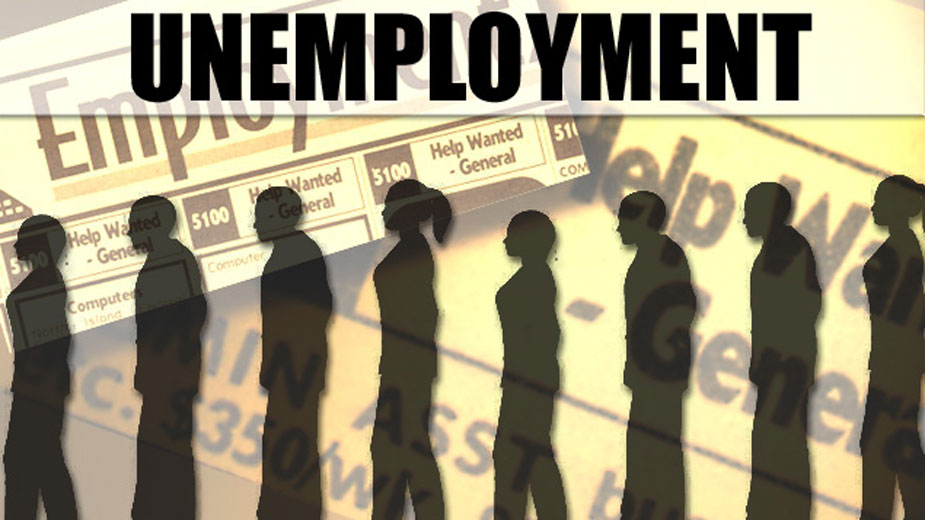Ohio Jobless Claims Tick down Last Week
COLUMBUS, Ohio — Total unemployment claims in the state were 74,784 for the week ended Jan. 22, down 831 from the week prior.
Initial jobless claims declined slightly for the second straight week, coming in at 15,158, down from the 15,398 reported the week ended Jan. 15, according to the latest report from the Ohio Department of Job and Family Services.
Continued jobless claims broke a five-week increase with 59,626 claims reported. That’s down from 60,217 continued jobless claims reported the week prior.
Ohio’s unemployment rate in December was 4.5% compared to the national rate of 3.9%. Ohio’s labor force participation rate in December was 61.5%, which is lower than the national rate of 61.9%.
Pennsylvania reported 20,472 initial jobless claims for the week ended Jan. 15, according to the most recent data available from the Center for Workforce Information & Analysis. That’s down from the 21,766 claims reported the week prior. Continued claims decreased in the commonwealth to 92,851 from 102,526 the week prior.
Nationally, fewer Americans applied for unemployment benefits last week following three straight increases amid a surge in cases of the omicron variant of COVID-19.
Jobless claims fell by 30,000 to 260,000 last week, the Labor Department reported Thursday, fewer than the 265,000 analysts were expecting.
The four-week average of claims, which compensates for weekly volatility, rose by 15,000 to 247,000, the highest in two months.
Altogether, nearly 1.7 million people were collecting jobless aid the week that ended Jan. 15, a nominal increase of 51,000 from the previous week.
A recent surge in COVID-19 cases has set back what had been a strong comeback from last year’s short but devastating coronavirus recession. Jobless claims, a proxy for layoffs, had fallen mostly steadily for about a year and late last year dipped below the pre-pandemic average of around 220,000 a week. Economists expect claims to return to those lower levels as the virus fades, which is already taking place in regions that were hit first with omicron infections.
After a spike in cases across the East Coast at the end of 2021, the seven-day rolling average for daily new COVID-19 cases in the U.S. has fallen by about 25% since January 12, according to data from Johns Hopkins University. However, the seven-day rolling average for COVID-19 deaths has risen significantly, from just less than 1,800 per day to about 2,300 per day during the past two weeks.
The job market has bounced back from last year’s brief but intense coronavirus recession, and companies are desperate to retain and hire workers, despite the recent uptick in jobless claims. The unemployment rate settled at 3.9% last month, a long steady decline from heights of nearly 15% in the spring of 2020 when the pandemic devastated the global economy.
Massive government spending and the vaccine rollout jumpstarted the economy as employers added a record 6.4 million jobs last year. But hiring slowed in November and December last year as employers struggled to fill job openings. Still, the unemployment rate fell last month to a pandemic low 3.9%.
Data for December will be released next week, but in November, employers posted 10.6 million job openings, the fifth-highest monthly total in records going back to 2000. A record 4.5 million workers, confident in their prospects for better opportunities, quit their jobs in November.
A red-hot U.S. economy has triggered inflation not seen in four decades, leading the Federal Reserve to ease its support for the economy. The Fed on Wednesday signaled that it would begin a series of interest-rate hikes in March, reversing pandemic-era policies that have fueled hiring and growth but also stubborn inflation. The downside of the Fed’s expected rate hike — or hikes — is that it will make it more expensive to borrow for a home, car or business.
Also Thursday, the government reported that the U.S. economy expanded 5.7% in 2021, grew last year at the fastest pace since a 7.2% surge in 1984 after a previous recession.
The Associated Press contributed to this article.
Published by The Business Journal, Youngstown, Ohio.


